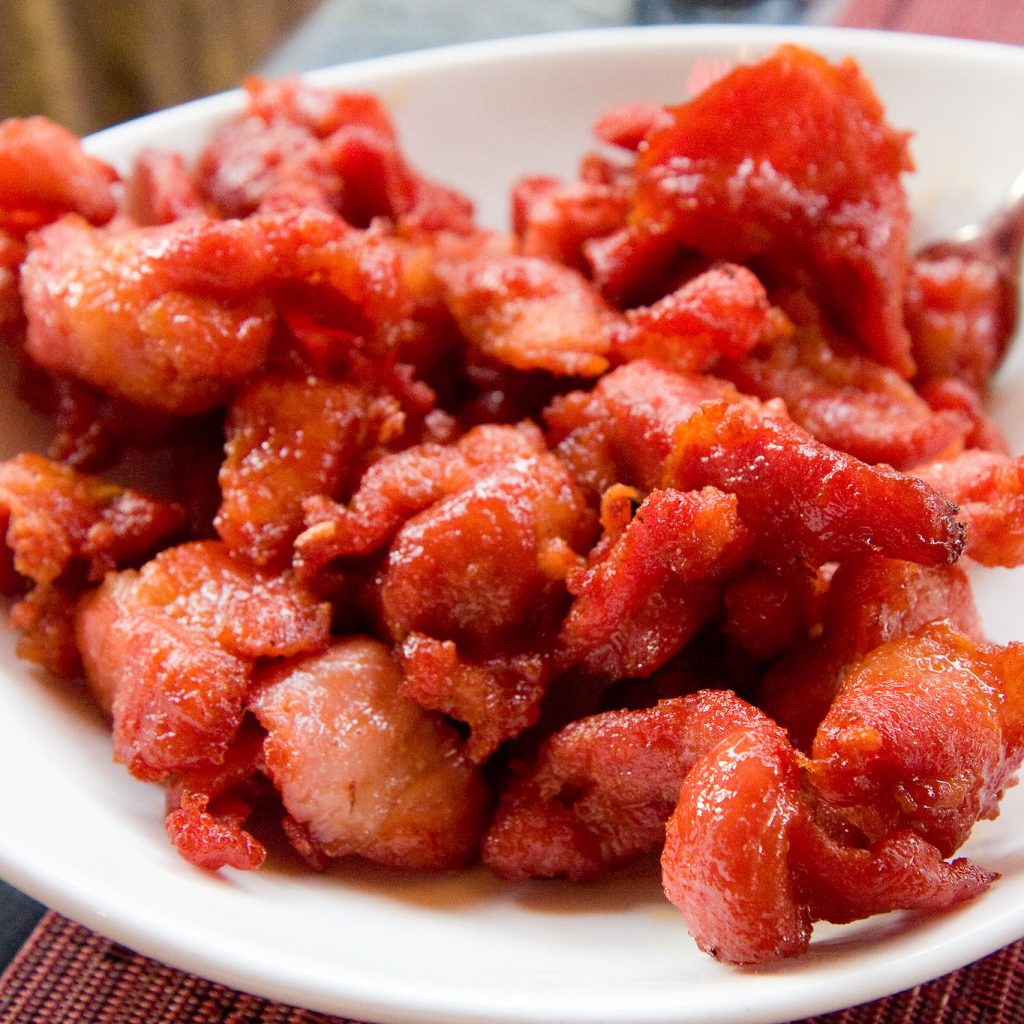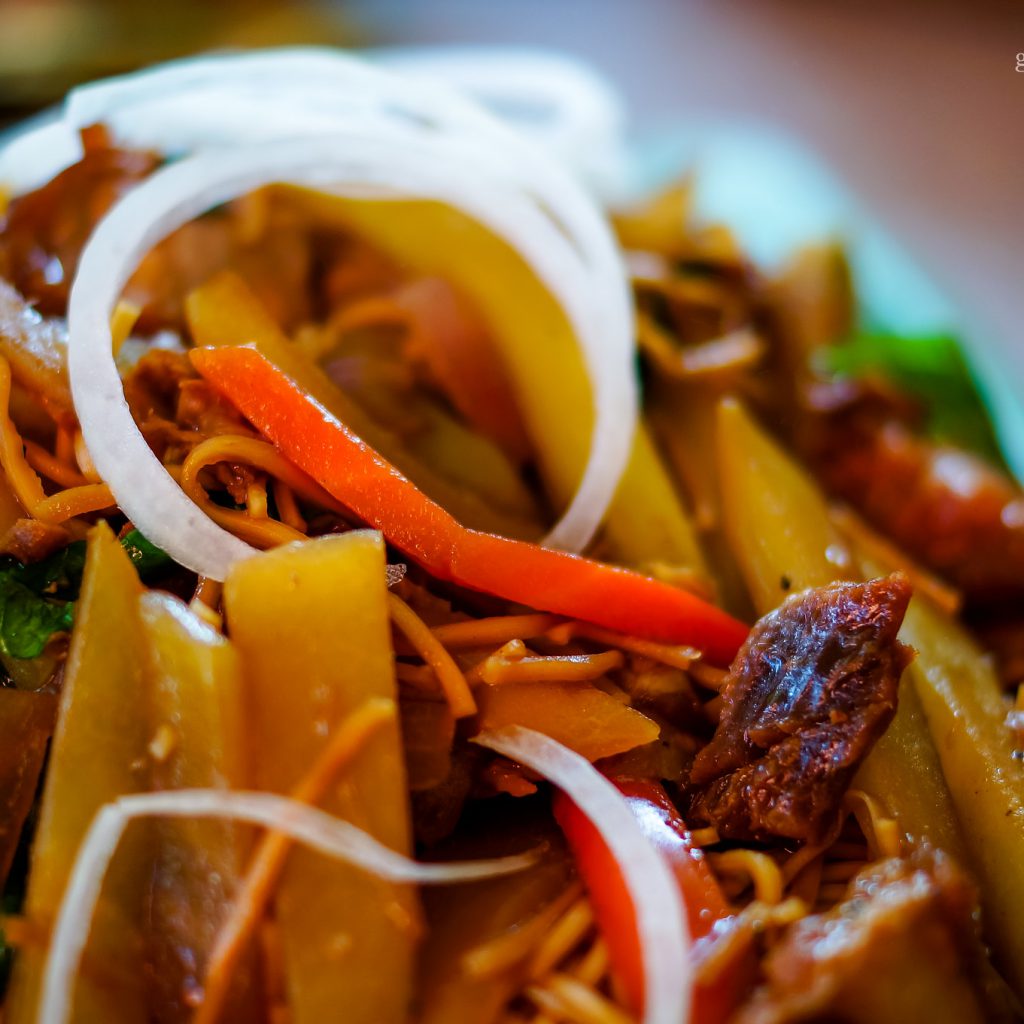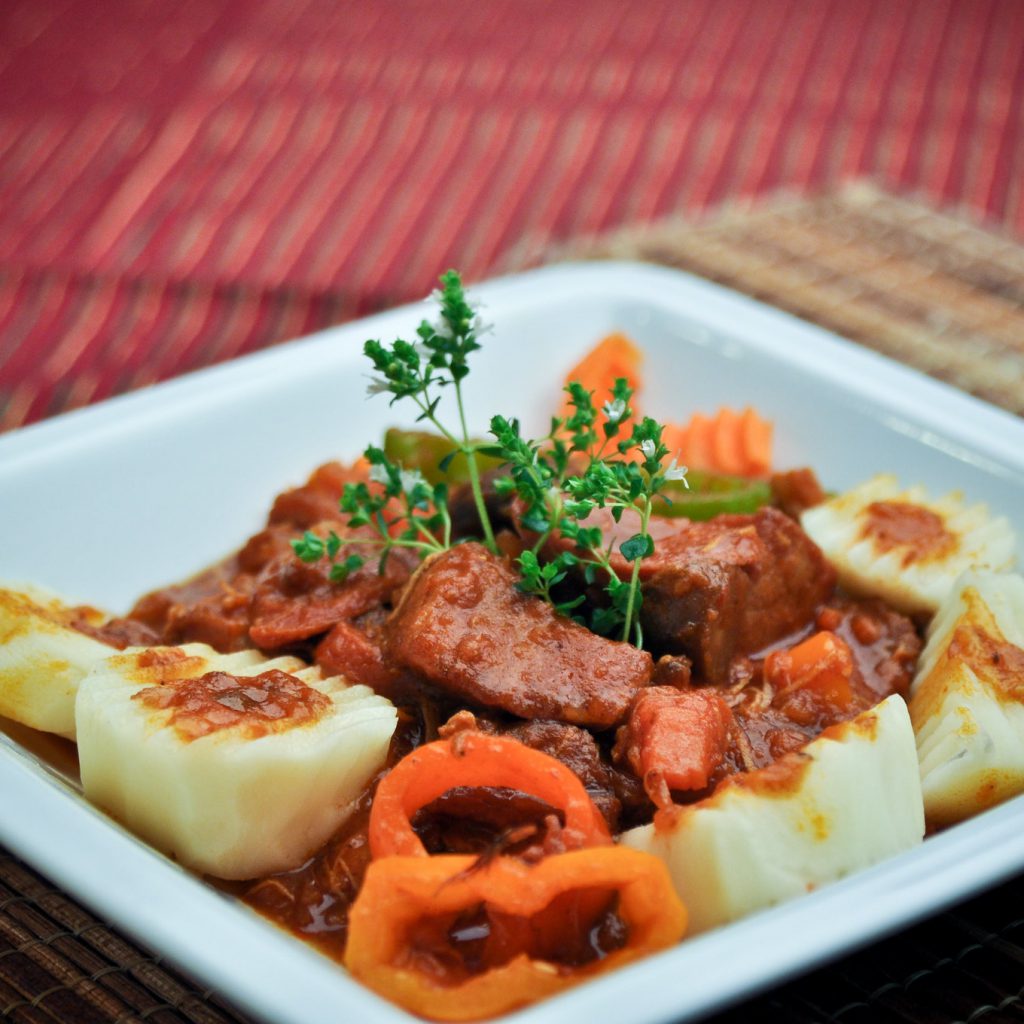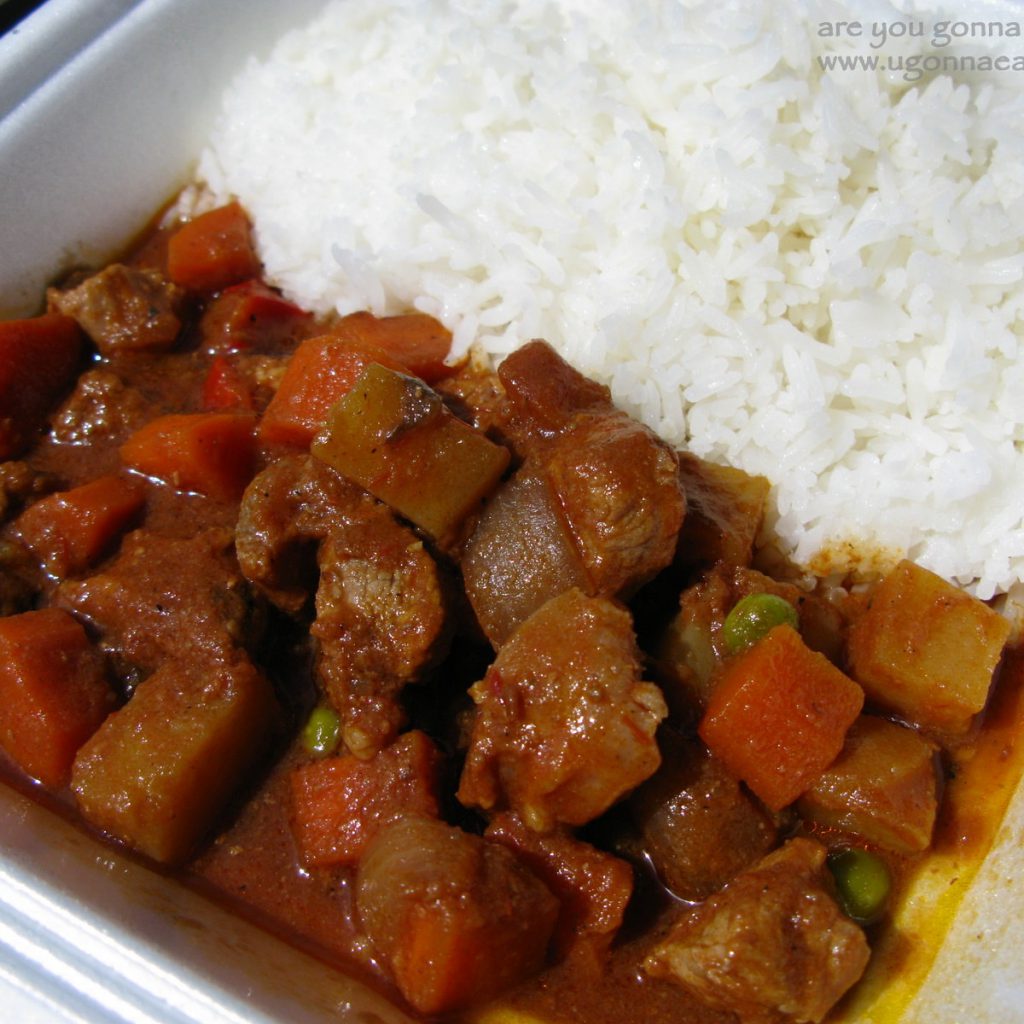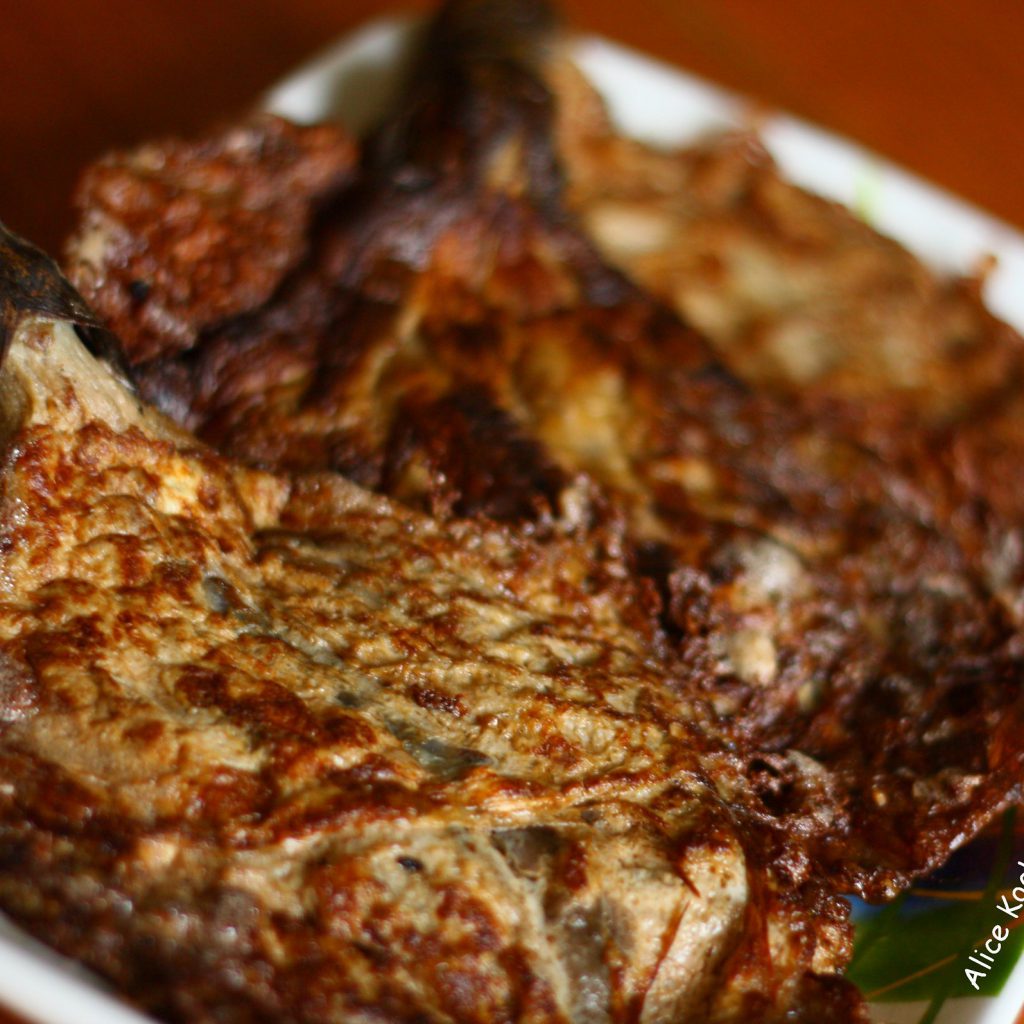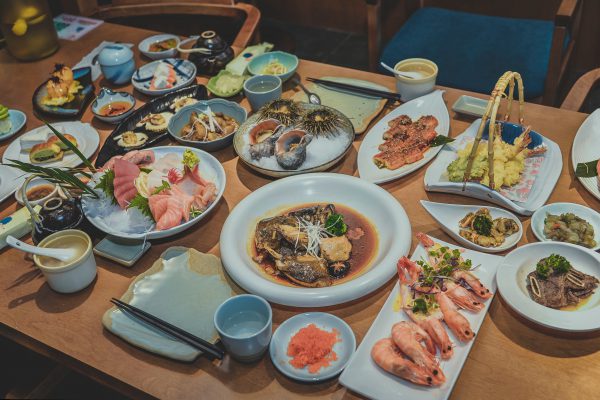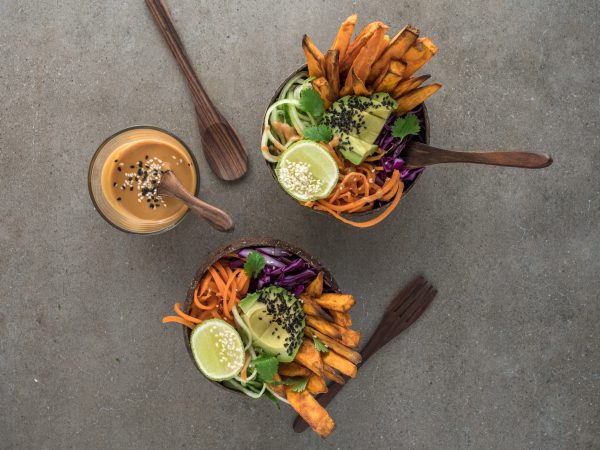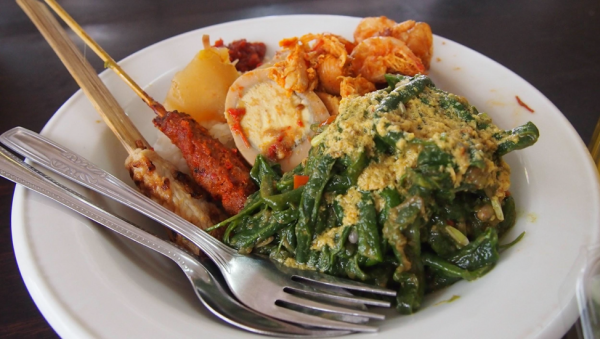Last Updated on May 18, 2023
The Philippines is one of the most exotic destinations you’ll ever hit. The outlandish archipelago has thousands of years of history and consists of around the same number of big and small islands laden with jade rice fields, smoldering volcanos, and heavenly tropical shores.
The Philippines will blow your mind no matter if you’re an outdoor adventurer or enjoy sandy beaches with a coconut cocktail in hand. And either way, you’ll work up an appetite when exploring this exotic archipelago.
So, what to eat when that happens? Just like its islands, Filipino food is full of adventure. Here are the dishes you shouldn’t miss out on during your time there. But first, a brief introduction to Filipino cuisine so that you know what you’re getting.
Filipino Food: The True Fusion Cuisine
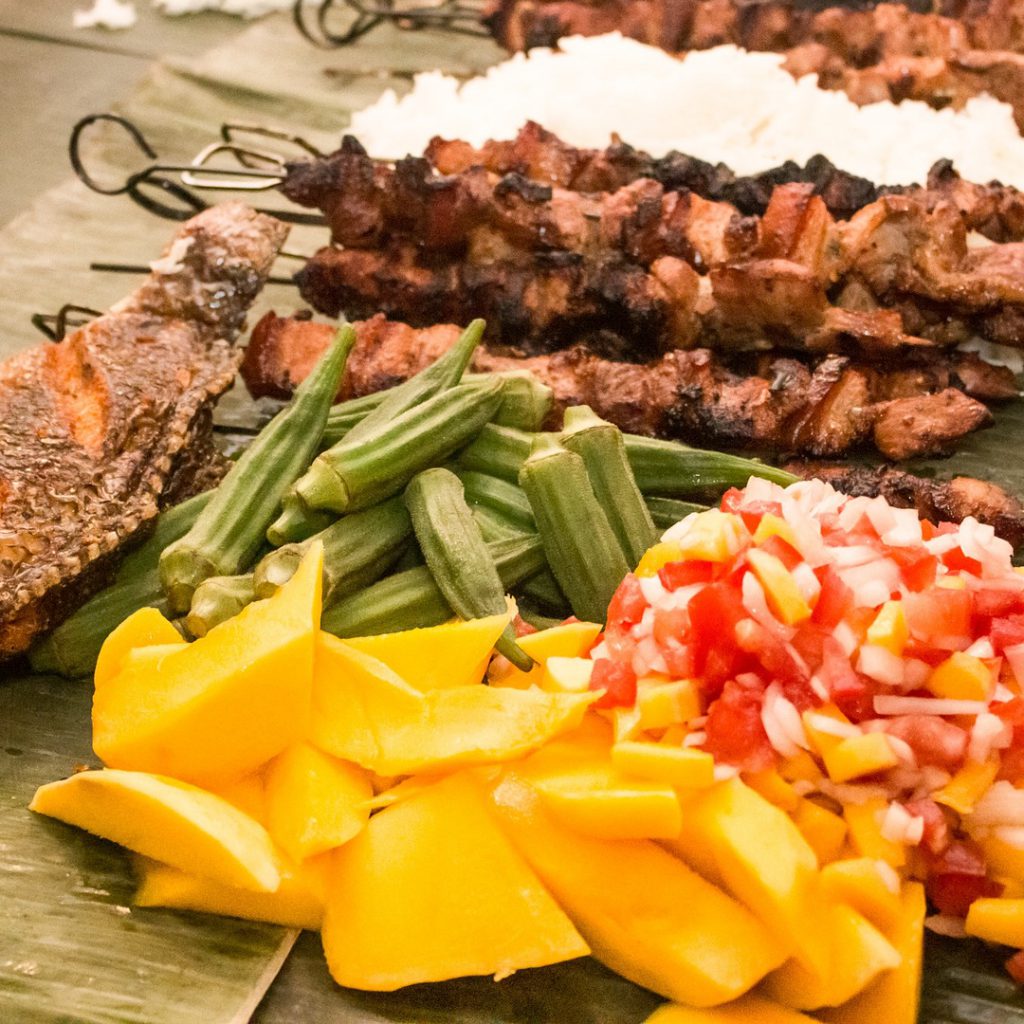
Filipinos are jolly, laid back, and full of charm, and they absolutely love food. So much so that one of the most common follow-up phrases to hello is “Kumain ka na ba?” meaning “Have you eaten yet?”
Like any other fusion cuisine, Filipino food is hard to explain in just one line or two. The gorgeous country has had its fair share of foreign rulers ever since it was discovered by westerners and had been trading with foreign merchants from China and India even before that.
Throughout its history, Filipino cuisine absorbed influences from Chinese, Indian, Spanish, Arab, Mexican, and American cuisine, embracing and transforming one after another. The language clearly reflects that too; Chinese names like pancit luglug or lumia Shanghai, Spanish names like lechon and embutido, as well as indigenous words like sinigang or kinilaw all happily coexist in the daily language describing dishes.
The thing about Filipino cuisine is that it doesn’t put too much effort into looking pretty. But the balancing of complex flavors like tangy, sour, sweet, and salty will broaden your horizon on gastronomy. While it’s true that Filipino dishes can come off a bit strong, especially if you’re used to the Western way of dining, there are dishes that every foodie should try at least once.
Characteristics of Filipino Cuisine

The first thing you’ll notice about Filipino food is its bold combinations of sour, salty, and sweet flavors.
The Philippines’ climate is quite hot and offers an abundance of sunshine. In such a place, you get lots of endemic fruits and citruses. Generously drizzling lime or lemon juice on food is almost customary in the Philippines.
But on top of that, if there’s anything Filipinos love, that’s vinegar. Maybe it’s because sugary fruits ferment very well or simply because Filipinos love the tangy, zesty, sour kick in their food, but you’ll find very different types of vinegar here that you didn’t think existed.
Among the most popular ones are sukang maasim (cane vinegar), sukang Iloko (sugarcane vinegar), sukang tuba (coconut vinegar), and sukang paombong (palm vinegar), used for braising, marinating, pickling, and making dipping sauces.
Another ingredient Filipinos can’t do without is meat. Salty, sour, and sweet stews, grills, and fried meats, as well as seafood, are quite common throughout the country. The meat is usually combined with rice, soups, and stews. It can also be fried, seasoned with vinegar, and eaten as a type of snack. In all honesty, you’ll love it if you’re a carnivore, but it’s a bit hard to find vegetarian and vegan options in the country.
The Most Traditional Way of Dining
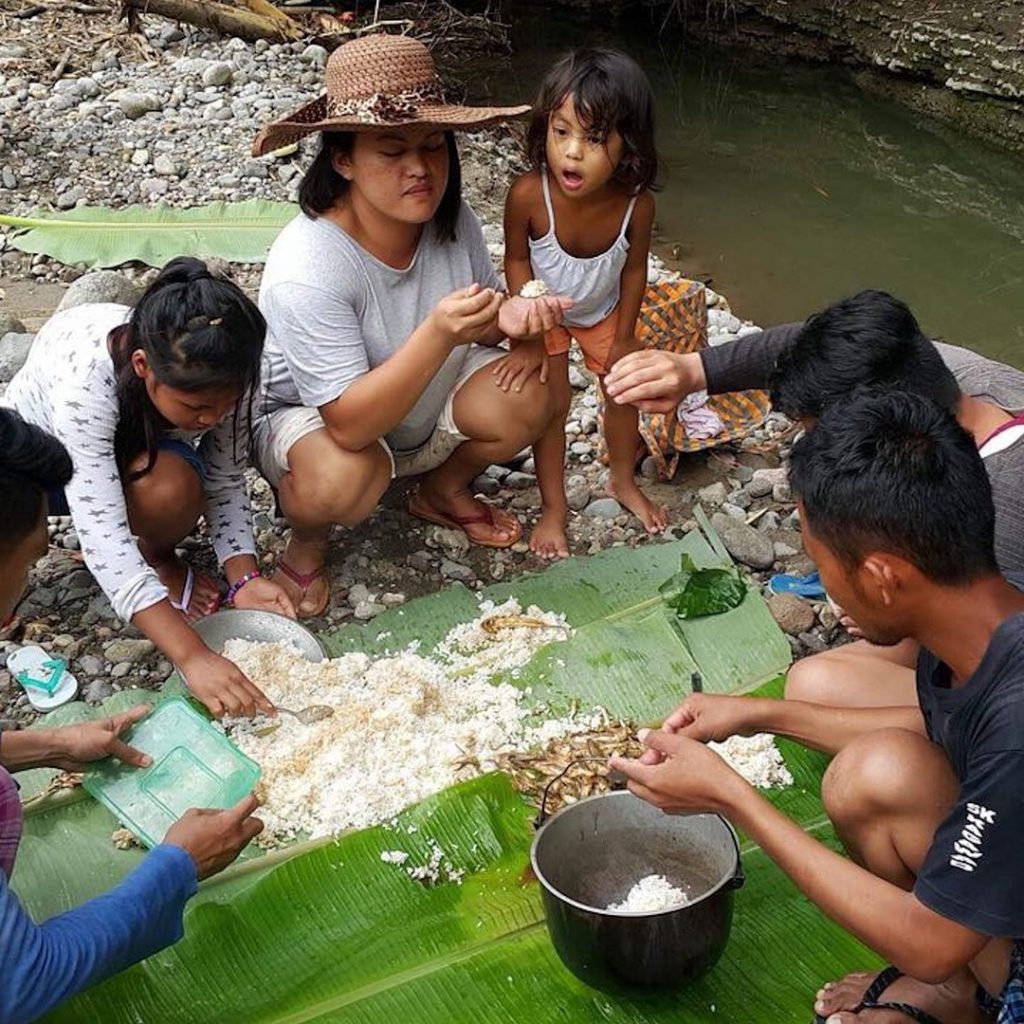
Unlike other East Asian cuisines, Filipinos don’t use chopsticks. Thanks to the heavy western influence, it’s common to use forks, spoons, and knives. However, the most traditional way of eating is by hand, a practice known as kamayan, even though it’s not widely practiced anymore.
In the cities, most people use cutlery, but in the villages, especially when eating at home, people typically use their hands to press rice together and scoop it into the main course. Some say this makes the dishes even more delicious!
Filipinos also have a liberal attitude toward courses. At the household meals, all the dishes are served together at the same time, and everybody is expected to help themselves to the food.
The same liberal attitude goes for the main meals of the day. Filipinos follow the idea of breakfast, lunch, and dinner very loosely and hardly ever say no to a merienda (an in-between meal or snack). In other words, there’s no right time or bad time to savor the dishes you’ll find down below.
15 Must-Try Filipino Dishes
1. Adobo
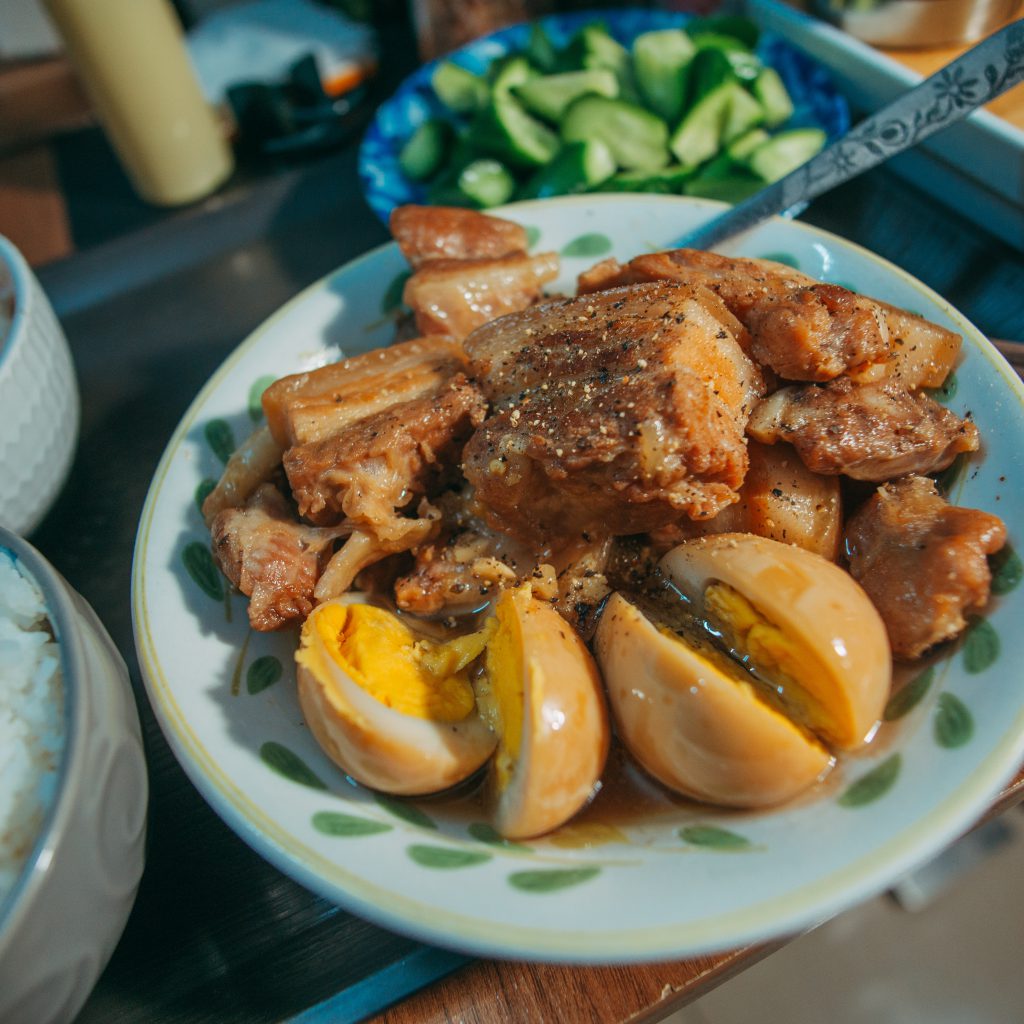
Adobo is hands down the most famous Filipino dish. Even though the word means marinated meat in Spanish, today there’s nothing Spanish left in adobo. It’s a meat-based dish that revolves around a play between saltiness and sourness.
It can be made of chicken, pork, or fish, but the fish is always cooked in a fair amount of soy sauce and vinegar — at least in the main cities. Seeing how much of these condiments go in the dish might make you think, “Man, that’s a lot of acids!” but when you taste adobo you’ll be surprised by the balanced sourness.
Back in the day, soy sauce, being a Chinese ingredient, wasn’t in the original recipe. That’s why there are many variations to the recipe that don’t include soy sauce. In the end, the original adobo is about harmony between vinegar, salt, and protein.
Equally loved by locals and foreigners, adobo is the first thing you should seek out when you’re visiting the Philippines. It’s almost the beloved emblem of the Filipino identity, successfully representing all the features of Filipino cuisine.
2. Chicharon
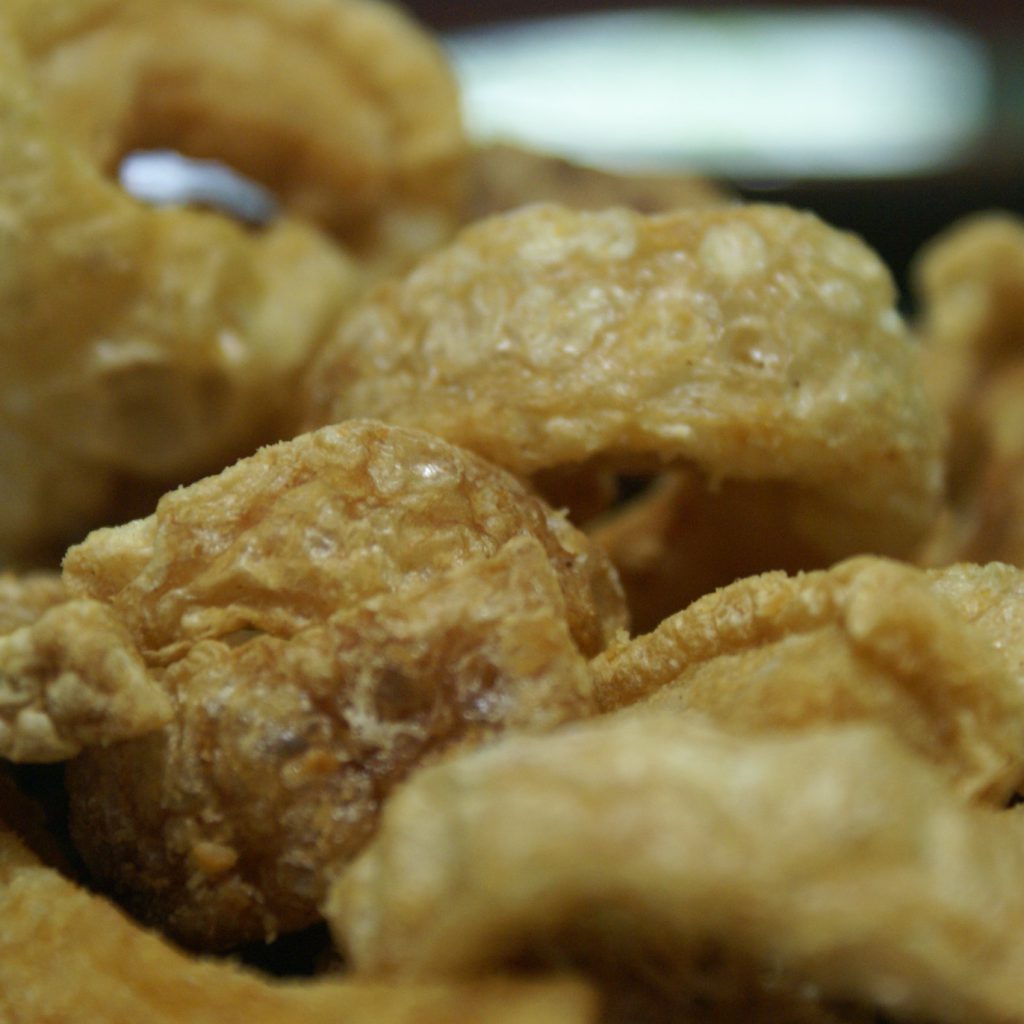
By sega_maca
Chicharon, in Spanish-speaking countries and the Philippines, is a fried appetizer made of deep-fried pork slices. Filipinos take it to another level with their meat variations. Along with regular pork belly chicharon, you have chicharon bituka, deep-fried chunks of pork intestine, chicharon manok, deep-fried pieces of chicken skin, or chicharon bulakla, deep-fried pork mesentery, the membrane that keeps the intestines attached to the abdomen.
Regardless of the type, chicharon is always served with vinegar, which not only seasons the dish but also helps break down the fat.
There’s nothing wrong with sticking with the regular pork chicharon, which also happens to be the most popular version. But if you’re an adventurous foodie, chicharon can be a great opportunity to try something peculiar.
3. Tocino
Tocino means bacon in Spanish. You’ll find tocino in Spain as well as in the Caribbean countries like Cuba or Puerto Rico, as well as the Philippines. But of course, there’s an important difference: the Filipino tocino has more tangy notes and is much sweeter.
To make tocino, Filipino cooks use a combination of sugar, salt, and powdered annatto — an orange-red condiment derived from the seeds of the tropical American achiote — to cure the meat.
You can have it any time of the day, but typically, tocino is eaten as a big brunch served with eggs, garlic-fried rice, and grilled plantains.
4. Sinigang

By Judah Kelber
Sinigang is a soupy brew that holds sourness dear to its heart. It consists of a base protein, indigenous fruits, and veggies, a combination of taro, leeks, radish, onion, bok choy, kangkong, celery, and chile peppers. It’s a hearty veggie stew with multiple layers of sourness generously provided by local fruits like unripe tamarin pod, Spanish plum, kamias, batuan, and guava.
Chicken sinigang uses chicken meat and chicken blood, as well as green tamarind with leaves and flowers.
Meat sinigang is made of either pork belly or beef shank boiled for a whole day in advance. The tenderized meat is added to the brew of vegetables to soak in all the flavors.
Alternatively, if you’re craving some seafood, there’s sinigang that contains shrimp, bangus, pla-pla, or lapu-lapu fish — Filipino people love to repeat words — and it’s drizzled with one of or a combination of lime, calamansi (Philippine lime), and kamias (a cucumber-like fruit) to give it that special Filipino sourness.
5. Kinilaw
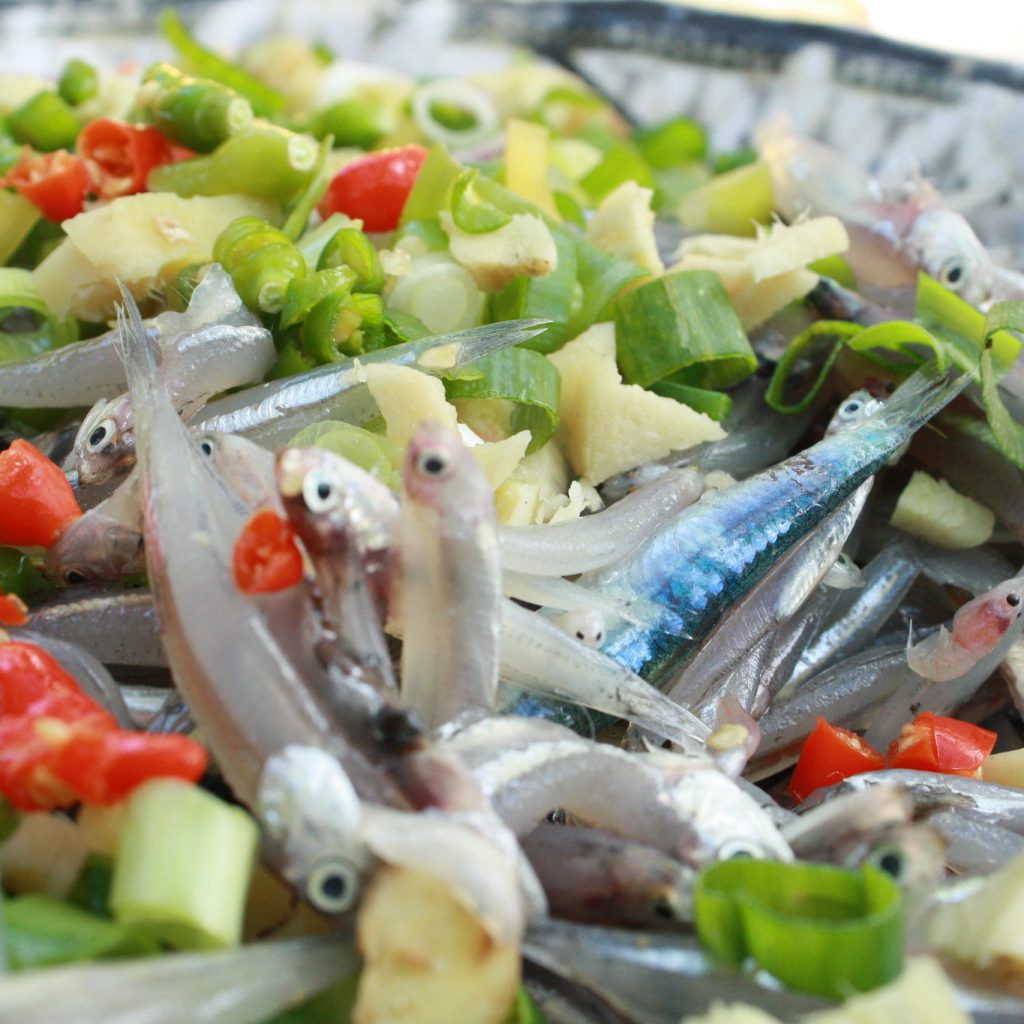
Kinilaw is a seafood dish, but the way it’s prepared resembles a ritual. You can think of it as the Filipino version of ceviche. The name roughly translates to “eaten raw,” and it’s the oldest known preparation technique used by the first inhabitants of the archipelago.
To make kinilaw, the seafood is cleaned, rinsed — preferably in seawater — and then bathed in a vinegary, citrusy dressing that firms the flesh. The translucent raw fish flesh turns opaque after the treatment. It’s supposed to be eaten right away. Unlike the mainstream hearty and fatefully heavy Filipino dishes, kinilaw is a quite fresh dish to snack on or have as an appetizer.
6. Pork Sisig
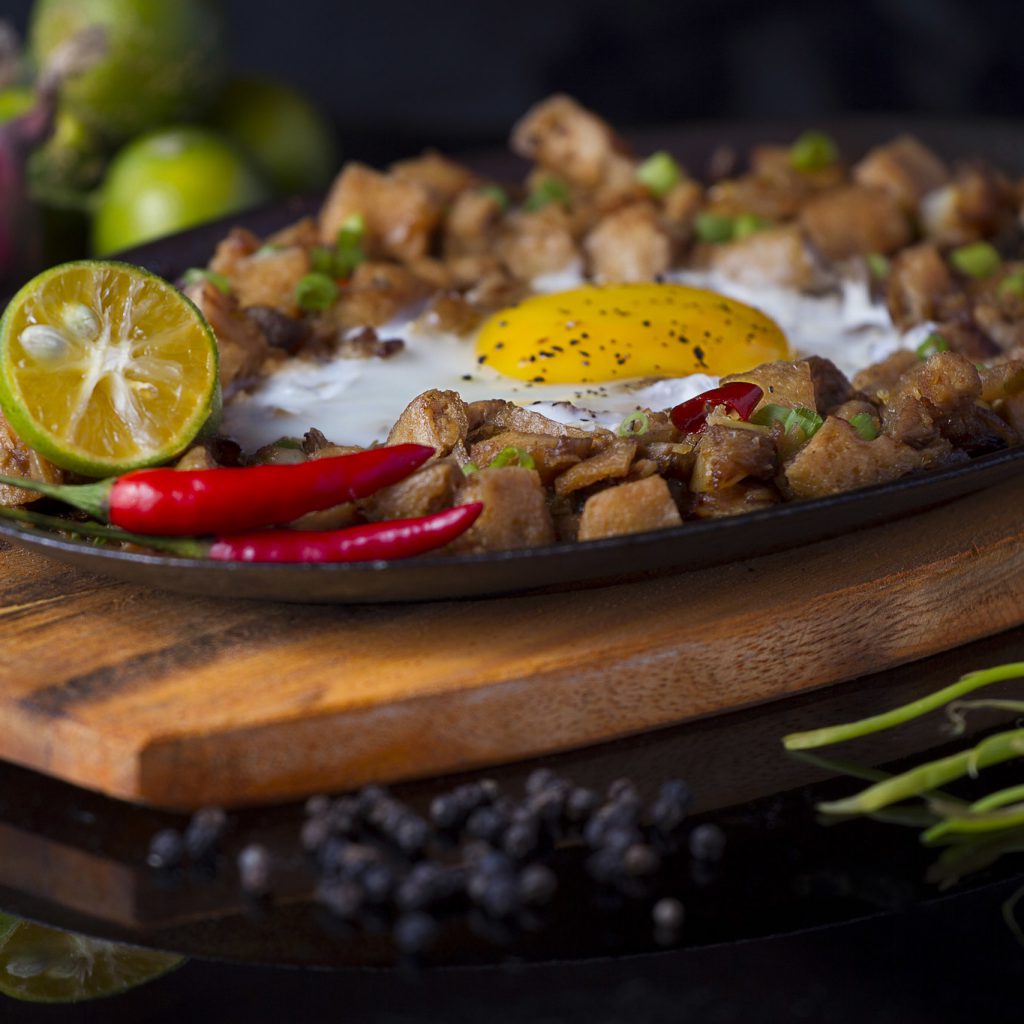
By huarrenjade
Originally from the Pampanga province, the unofficial culinary capital of the country, pork sisig is a very popular appetizer, or merienda, in the Philippines.
It’s made by boiling, broiling, and then grilling the pig’s head. Next, the tenderized meat is chopped up, seasoned with calamansi juice and vinegar, and served on a hot cast iron dish along with assorted roasted vegetables and eggs.
Pork sisig was invented during the American invasion, which is fairly recent when you think about the whole history of the islands. But Filipinos love it so much that today there are many variations of it made of ingredients like squid, mussels, or oysters, as well as exotic ones, such as ostrich or crocodile meat.
7. Kare Kare
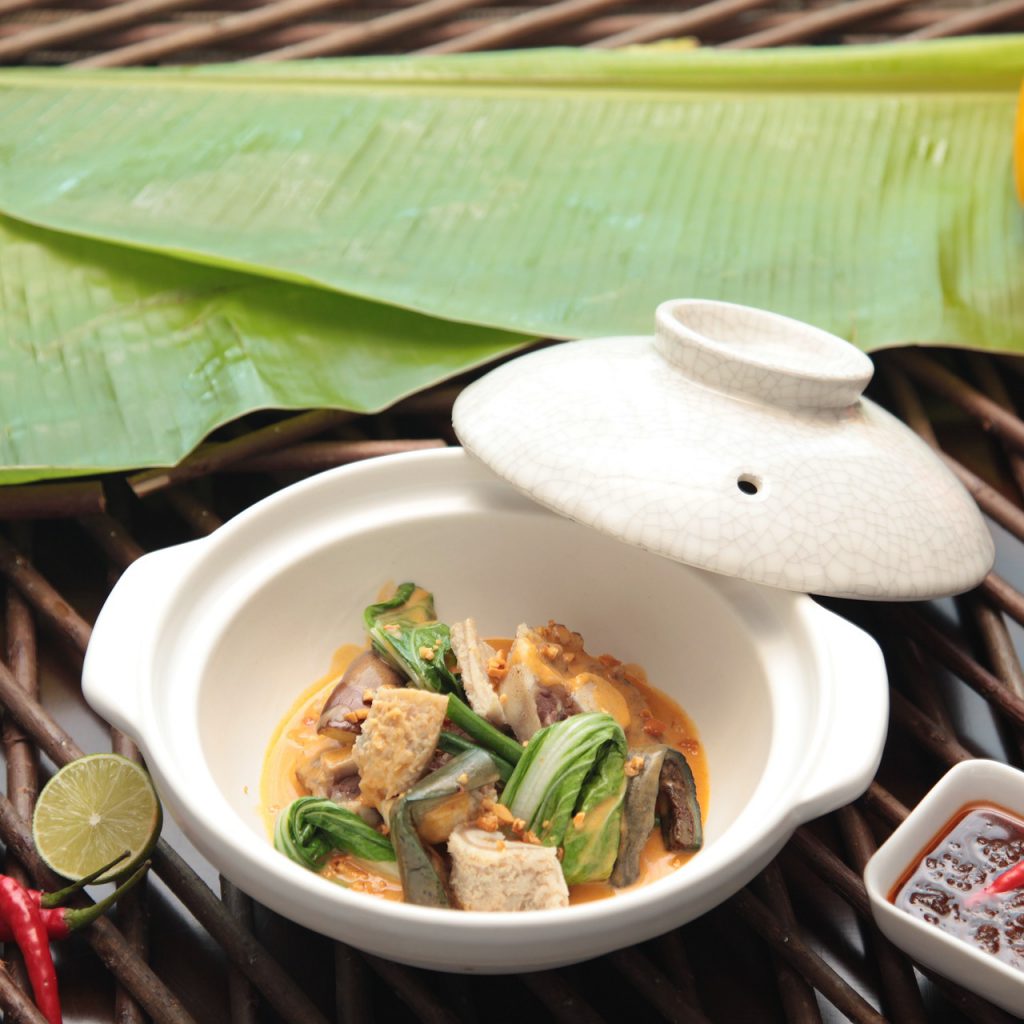
Kare means spiced sauce in the Tamil language, the official language of one of the Indian states — you must be hearing its resemblance to curry. Although the word comes from Sanskrit, any Filipino will claim this dish belongs to the Philippines, and they are right. Kare kare here resembles more of a thick soupy stew than the Indian curry.
Even though there are also seafood or exclusively vegetable variations, the most common kare kare is made of beef or pork meat. Specifically oxtail, pork hocks, beef tripe, and alike. The meat is stewed in vegetables and a thick, savory peanut sauce, which is crucial for its taste.
When you order kare kare, add some of the many sour condiments that come with it and try to find the sweet spot of sourness that’s just right for you.
8. Kakanin
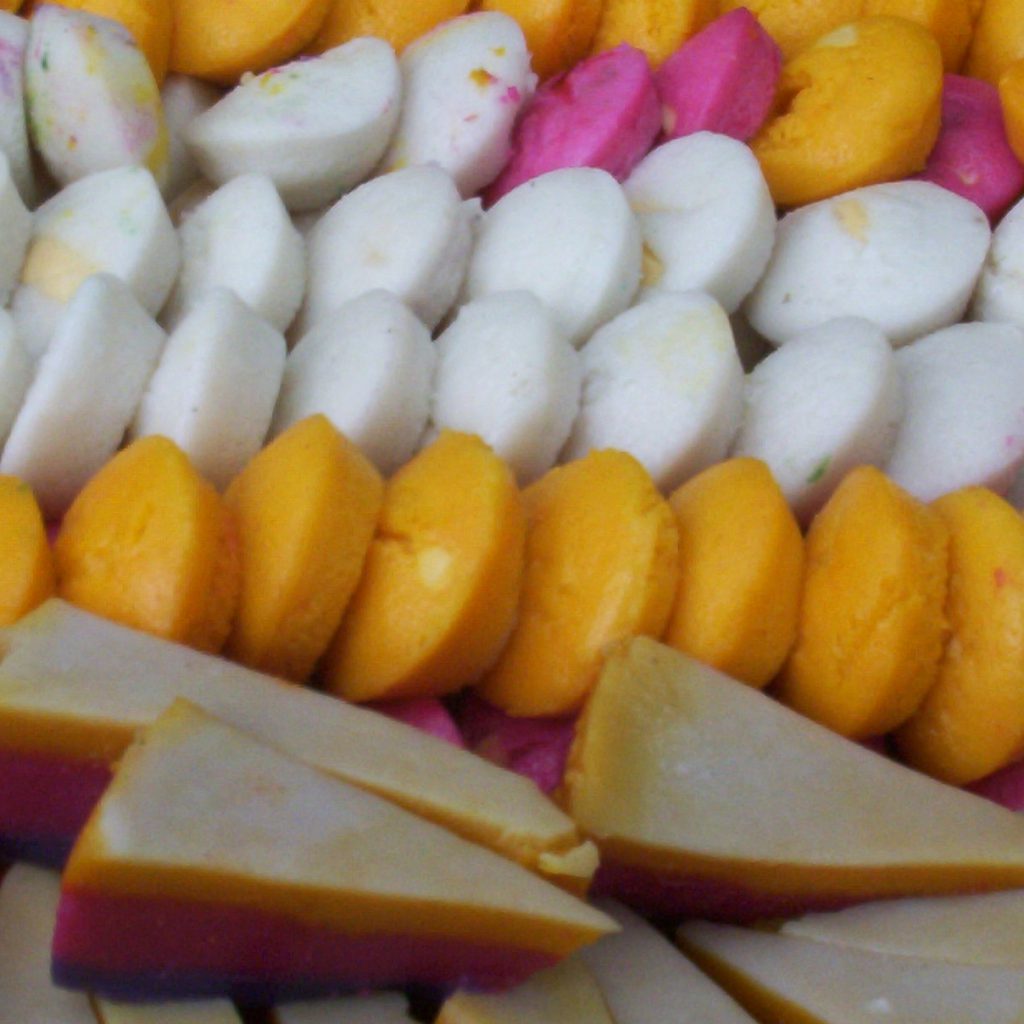
By emman
Kakakin is the collective word for traditional Filipino desserts such as bibingka, puto, and suman. The root of the word means cooked rice, which is exactly what the majority of Filipino desserts are made of.
In the Philippines, kakanin is usually eaten as a snack between meals, not as an after-meal dessert.
Bibingka is the most popular Filipino rice cake. The cakes are simply made of ground rice, sugar, baking powder, and water. More high-class versions also include coconut milk and yeast. The cake batter is baked at very high temperatures, which gives bibingka their characteristic golden brown tops. Apart from rice, it’s also possible to find versions made of grated yucca (cassava bibingka).
Puto is basically round rice cakes steamed in leaves. There are many different versions throughout the country, so the ingredients may include cheese, grated coconut, pandan leaves, or grated cassava. But the way of eating it is the same: have it as a snack, or dip it into a hearty stew.
Steaming rice cakes in leaves sounds easy, but puto is definitely not an easy dish to master. When done right, the rice cake rises without deforming, giving you a nice, smooth, satisfactory fluff.
Lastly, Suman, arguably the simplest kakanin, is made of glutinous rice wrapped in banana leaves. The little bundles are cooked in coconut milk and sprinkled with sugar. Thanks to the coconut milk and banana leaves, suman is a very aromatic rice cake to be enjoyed with meals or as a snack when you feel a little peckish.
9. Pancit
Pancit is the general name for noodle dishes in Filipino cuisine. Filipino cooks use several different noodles, such as canton (egg noodles), bihon (rice noodles), misua (wheat noodles), miki (whole wheat noodles), and sotanghon (mung bean noodles).
Pancit is typically made by sauteing vegetables, meat, seafood, or chicken and using the noodle as a bed to serve them. Drizzling with citrus juice, fish sauce, or soy sauce is a must.
10. Lumpia

By calz0ne
Given nature’s generosity in the archipelago, the Filipinos have a quite rich take on spring rolls, lumpia.
The most common lumpia you’ll find are stuffed with a mixture of veggies and flavored with a bit of fish or pork. When you ask for lumpia Shanghai, you get something a little bit fancier: deep-fried lumpia stuffed with ground pork.
The ingredients for the stuffing are sauced with vinegar, soy sauce, cornstarch, and sugar rolled in fresh, thin crepes, and deep-fried. Spring roll games are quite open to interpretation, so don’t be surprised if you find creative lumpias with fresh bamboo shoots, pineapples, or lobsters.
11. Apritada
Apritada is the Filipino take on the frittata. But it’s very different from your regular frittata. Here the ingredients are first pan-fried and then stewed in a tangy sauce.
The essence of Filipino apritada is the browned meat (beef, pork, or chicken) simmered in a tomato, olive oil, garlic sauce, and of course, vinegar. The sauce also may include some local peppers and spices to give it a smoky aroma. The result is a hearty, zesty, and filling dish.
12. Tokwa’t Baboy

By chilichiq
Tokwa’t baboy is the quintessential Filipino street food made of simple ingredients: Boiled or grilled pork belly (sometimes also ears) and deep-fried tofu. It’s drizzled with a sauce made of soy sauce, vinegar, onions, and chili peppers.
Tokwa’t baboy is a true comfort food, perfect for either having it on the go on a walking tour around the city or serving it next to a glass of wine or beer. But don’t be surprised if you see it accompanying a plate of fluffy rice too.
13. Menudo
The word menudo comes from the Mexican stew with the same name. But unlike Mexican menudo, the Filipino take doesn’t include chili sauce or tripe (cow’s stomach).
Here in the Philippines, menudo, also known as ginagmay, is a stew consisting of tomato sauce, pork meat, pork liver, sausages, and vegetables like garbanzo beans, potatoes, and carrots cut in uniform chunks and usually served on a bed of rice. It’s a popular dish to serve during gatherings and fiestas.
14. Torta
Torta is a Spanish word that can mean cakes, flatbreads, pies, or even sandwiches depending on the context. But in the Philippines, torta refers to a type of omelet. A spin-off from the Spanish omelet, the most popular version of torta is made of ground meat, but there are numerous variations such as tortang gulay (bell peppers, onions, and garlic omelet) or tortang (eggplant omelet).
If you’re a big eater who likes to start the day with a big breakfast, the hearty, meaty tortas are perfect. If you like something lighter, vegetable tortas can take care of you.
15. Empanada
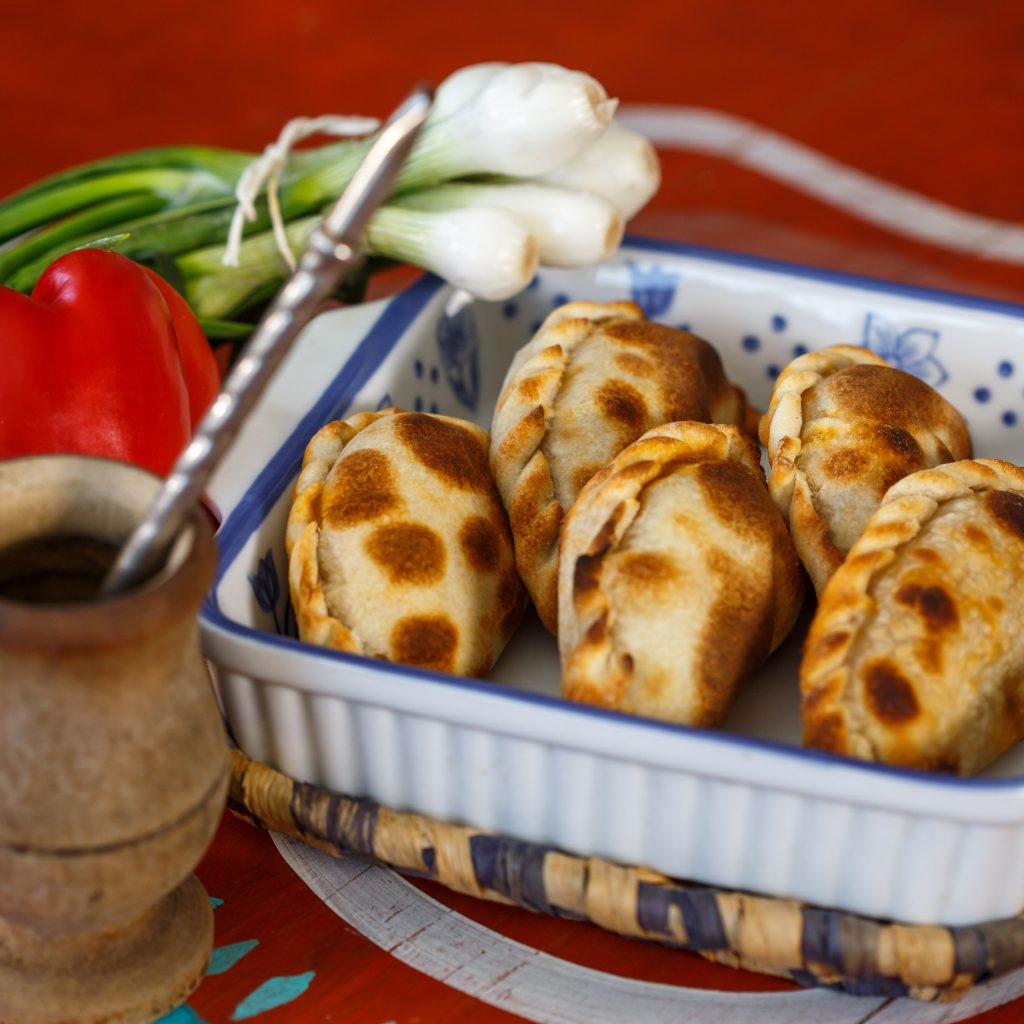
Empanada, the famous Latin American fried bread, is also a quintessential Filipino merineda. Here in the Philippines, the most typical stuffing for an empanada is ground beef sauteed with vegetables and raisins which gives it a distinct sweet taste. And, as opposed to corn or wheat flour, in the Philippines, empanadas are typically made of rice flour.
Empanadas can also be baked, but you’ll most probably get them handed to you straight from a huge pot of boiling oil. In some regions, it’s common to dip them in a type of vinegar to cool them down.
It’s also possible to find unconventional empanadas varying among the regions of the archipelago, for example, ones stuffed with green papaya or sausage.
Over and Out!
The Philippines is one melting pot of very different ethnic groups inhabiting the archipelago and very different influences from the outside world. The result is one of the most eclectic cuisines you’ll come across the globe. The dishes skillfully balance strong notes of sweet, sour, and salty, ready to give you an unforgettable dining experience.


